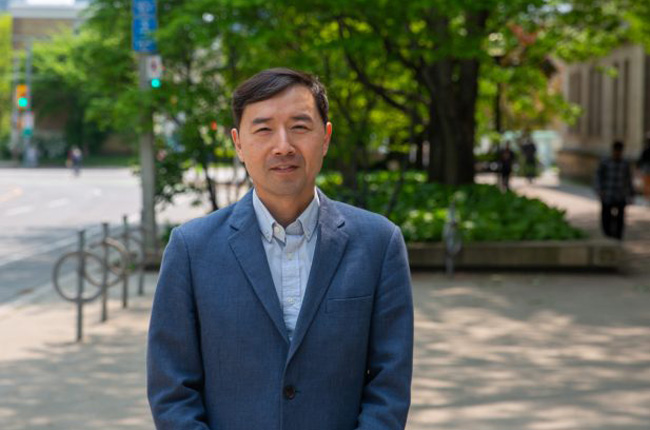
JUNE 6, 2023 • By Safa Jinje
Professor Paul Yoo (BME, ECE) is designing novel electrodes for non-invasive electrical nerve stimulation, a technology that could be used in therapies for the treatment of epilepsy, depression, Parkinson’s disease and many pain disorders.
Yoo’s project is one of five from across U of T Engineering to receive funding from the Connaught Innovation Awards, which helps accelerate the development and commercialization of promising technologies.
For more than half a century, neuromodulation therapies have provided life-changing relief for people living with chronic health conditions. The field includes nerve stimulation devices, which work by directing mild electrical stimulation at targeted areas of the nervous system.
Electrical neuromodulation treatments continue to evolve, but Yoo says that there are currently some disadvantages that make it inaccessible for many patients. For example, many of the devices that are approved by Health Canada and the U.S. Food and Drug Administration (FDA) require surgical implantation.
“These devices can run up to $15,000, which is very expensive, especially when combined with the cost of the surgical procedure,” says Yoo.
“There are also complications that can arise after implantation, such as infection, pain at the implant site and other adverse effects.”
A non-invasive approach — one that would stimulate nervous tissue through the skin rather than via an implanted device — offers an attractive alternative for patients, but Yoo says that it’s difficult to electrically activate a target nerve that is located below the skin surface without also activating the skin’s sensory fibres.
When patients using such devices turn up the amplitude on their external neuromodulation device, they can experience very uncomfortable skin sensations which in turn poses a limit on the amount of electrical current that can be delivered to the target nerve.
“It seems like a simple problem, but no one has been able to get around that problem of selectively activating that targeted nerve,” says Yoo.
“By making careful modifications to the surface electrodes through computational modelling, we are optimizing the flow of electrical current at the skin-electrode interface. Through this mechanism, we are trying to build commercially viable surface electrodes that can be distributed or licensed to companies involved with developing neuromodulation therapies.”
Yoo hopes this non-invasive solution will allow a larger population, including people who live in the developing world, to benefit from neuromodulation therapies.
“Professor Yoo’s research epitomizes the engineering mindset — a solution is only as good as its practicability,” says Professor Deepa Kundur, Chair of ECE. “By addressing the problem of both function and cost, Yoo’s non-invasive approach to electrical nerve stimulation is one that could have global benefits. Many congratulations to Paul on this award.”
“I am honoured to receive this Connaught Innovation Award,” says Yoo. “I’ve received it a few times already, and it has been very important in helping my team push our research forward towards commercial viability.”
The other four projects funded by this year’s Connaught Innovation Awards are:
- A tool to optimize complex formulations based on evolutionary computation accelerated by artificial neural networks – Professor Julie Audet (BME)
- Reducing microplastic fibre pollution using low friction polymer brush as textile coatings – Professor Kevin Golovin (MIE)
- A hardware accelerator for fully homomorphic encryption based machine learning applications — Professor Glenn Gulak (ECE)
- Smart building facades for scalable operational energy management – Professor Benjamin Hatton (MSE)
- Autonomous additive manufacturing system (AAMS) – Professor Yu Zou (MSE)
Story from U of T Engineering News, with files from Matthew Tierney


